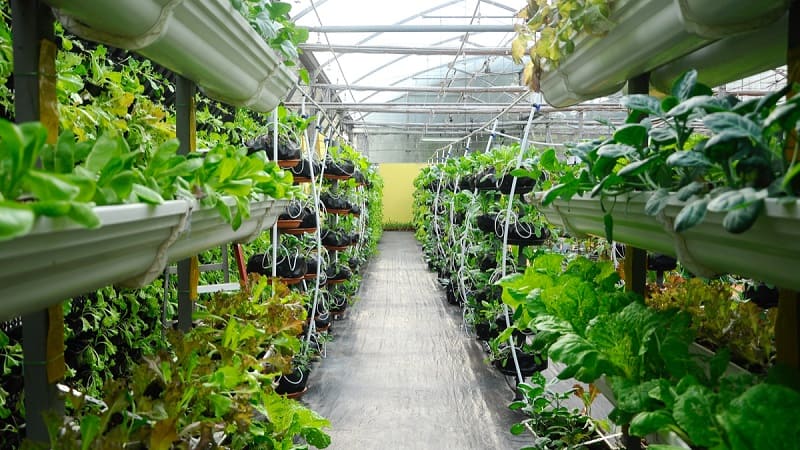
The virtual classroom is a realistic representation of the workplace. A worker can do field preparation and harvesting before planting. The player completes the provided scenarios and earns points based on how well they fared. Once the assignment is finished, the employee’s points are added to determine their final qualification score. There is always a second chance to “replay” a failed attempt. Ensure you’ve knowledge about a metaverse development company that can undoubtedly offer you virtual reality instruction as per your requirement more successfully.
Muscle memory is more effective than head knowledge in life-or-death situations, so training is essential. You can work much more quickly and effectively by training a reflex in the muscles.
There are also options like home videos and personal trainers. Neither option is particularly appealing; at first, you can only sit back and watch, which is tedious. Second, personal trainers are prohibitively expensive and can only work with one person at a time.

AR Saves Money on Plants’ Protection Tools
If you know what you’re up against in terms of pests and diseases and how to combat them, you can make a strategic decision that will save your crop and cut costs.
Surveying a field in VR is possible. Farmers can more easily ascertain the soil quality, choose the best crops, and maximize the soil’s potential for crop production.
Just how does it work in practice? There is a possibility of placing the sensors in the field to check on the harvest. It enables agronomists to get data on the weather, temperature, plant health, fertilizer needs, and harvest date simply by pointing a tablet or smartphone camera at the plant.
What opportunities can the Metaverse bring to Indoor Ag?
MarketsandMarkets predicts that the value of the indoor farming technology market will rise to $24.8 billion by 2026. There has been a latest uptick in the utilization of cutting-edge technology by indoor growers, who hope it will streamline and improve every step of the cultivation process, from planting to eating.
With more and more growers entering the industry and a heightened focus on food security and the demand for more sustainably produced crops, the virtual world has a lot to offer Indoor Ag. You can already see big plans for the future on this front, but the most compelling benefit the Metaverse can offer is the enhancement of learning and education. What are the benefits of Indoor Farming, then?
Trade shows, conferences, and communities
Businesses and industries are exploring a variety of options, one of which is the development of online communities in the Metaverse. Brands like Nike and Skechers are betting on the power of communities formed around their products and services by filing 8 trademarks related to the sale of virtual merchandise. It’s possible that the process of community development in the realm of Indoor Ag would look a little different. Conventions such as trade shows and conferences may one day bring the networking and education they provide to the Metaverse. The Metaverse is a convenient and accessible venue for holding trade shows, discussions, and live panels. Even after the events have concluded, investors and newcomers can gain access to the content online and participate in the fairs virtually from any location.
AmHydro is working hard at developing a Metaverse version of their hands-on hydroponic farming seminars.
Hydroponic system designer and manufacturer AmHydro has always relied on cutting-edge technology to provide productive controlled environment agriculture (CEA) methods to growers.
Augmented Reality Use Cases in Agriculture
The initial application is for Plant Vision (formerly known as Huxley). This crop management system takes plant cultivation and digitizes it using AI, ML, and AR. We are installing RGB, infrared, and other sensors to collect data in a building. Every minute, photos of the crops are taken, and the AI analyzes them to determine their state of health. Wearables like Google Glasses can provide a farmer with augmented reality data such as weather, plant health, and more.
Isabel is the second application of augmented reality (AR) in Farming. It is an independent mobile app that controls a hydroponic farm that spans 177 acres. This project was originally conceived as a humanitarian effort in San Francisco.
The project relocated to Peru after Isabel’s success in the Bay Area. After some development, it matured into a robust program for managing greenhouses. The app has timers, video guides, and self-service fertilization and watering.
Last but not least, there’s the Amazone Group, a major producer of farm equipment. The SmartInstruction product lets Amazon experts make AR-based how-to guides for repairs and upkeep.
How VR and AR Are Progressing in the World?
In the United States. The two most prominent market trends are the military and the aerospace industries. The first group is supported by grants from the US Department of Defense, while NASA funds the second group. Like R2D2 from Star Wars, space drones are already in the works.
The agricultural industry is another that has adopted VR/AR tools. However, due to the high cost, cases involving substantial machinery are particularly interesting in this sector. The use of simulators is beneficial in the training of employees.
The United States, Great Britain, Germany, France, Japan, Arab countries (due to lack of workforce), and Scandinavian countries are at the forefront of Serious Game development (virtual training and simulations).
Machine learning has become popular recently. These self-improving systems are what we use every day at work. In addition, novel approaches, such as developing prototype surgical gloves, offer exciting possibilities for modern surgery. Technologies are being developed for the time when virtual and augmented reality (VR+AR) will merge to allow for tactile interactions.
The demand for simulation games shows no signs of abating. Pure Farming is a popular farm simulator. Sony has backed the project, and is being made for PlayStation VR. Similarly, there are efforts to create farm simulators for use on smartphones. They are also being made for other purposes besides video games. Unions representing American farmers have funded similar games for their members. Agricultural machinery manufacturers have a growing need for advertising in this sector. We are about to enter a parallel farming world to the World of Warcraft, courtesy of the farming simulator.
Conclusion
Ultimately, AR and VR altogether are making headway in the business world, with numerous companies already using the technology. By automating several processes and displaying how business operations are conducted in an interactive manner, they present enormous opportunities for businesses.
Despite the obvious benefits of AR and VR, many farmers still need to be more hesitant to invest in the technologies available to them.
Author Profile
Latest entries
 ArticleOctober 23, 2025How to Use Rotating Residential Proxies
ArticleOctober 23, 2025How to Use Rotating Residential Proxies ArticleOctober 19, 2025Why You Should Use Geo-Targeted Proxies for Web Scraping
ArticleOctober 19, 2025Why You Should Use Geo-Targeted Proxies for Web Scraping SoftwareOctober 15, 2025The Importance of Cyber Security in a Digitally Connected World
SoftwareOctober 15, 2025The Importance of Cyber Security in a Digitally Connected World BlogOctober 8, 2025The Most Recent Trends in Generative AI in the Banking Industry
BlogOctober 8, 2025The Most Recent Trends in Generative AI in the Banking Industry